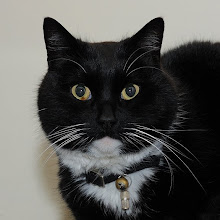
Due to the summer season yet another book review. This time Bloodline, on the origins of the regular regiments and corps of the British Army. It was written by Iain Gordon, founder of Method Publishing and author of several other books on the British armed forces.
At first sight, and compared to the books by Goff Lumley and Gerry Murphy, this book looks not bad at all and may stand the test of trial.
This is partly due to the fact that the book's title does not pretend the books covers anything from the origin of the (modern) of the British Army in 1661 until present day. As such, it is pretty obvious to the reader that this book is intended for those interested in tracing, within limits, the forebears of the present day regiments and corps of the British Army. Nothing more, nothing less.
The regiments and corps are presented in the almost obligatory order of precedence. For each regiment and corps the author give basic lineage information (no full dates nor colonels (except present day)), battle honours, badges and overview of alliances, regimental marches. A nice addition is the inclusion of contact details of the regiments and corps, and regimental museums. So anyone interested in contacting a regiment directly has ample means.
The presentation and layout of the book's content is compact and clear, and the short narratives provide sufficient information to give the reader a basic understanding. A chronological list of battle honours gives this book some additional value.
No good news without bad news, but fortunately I can be brief on this. A very bad first it that this book has no list of references (except for the contact details of the regiments and corps). For me this means this book is not suited very much as a start for further reading into the subject of British regimental lineages. Simply because the author does not guide me into any direction. Secondly, the post-Restoration period is treated too briefly in the narratives in my opinion. This seems to be a recurring thing with many authors. Thirdly, Gordon gives sometimes wrong and strange bits of information in the already short notes on regiments. For example, under the Grenadier Guards, he mentions a Cromwellion invasion of the Netherlands. Elsewhere he states the Scots, or Green Brigade was in Dutch service (later he places them correctly in Swedish service).
Gives the books (limited) scope to present day regiments and their ancestors, it would be unfair of me to make a remark on the neglect of disbanded regiments of the late 17th and early 18th centuries.
The final verdict for this book will be a 7/7.5 out of 10.
Positive: not pretentious regarding the scope of the work, clear and compact information, address/internet details of regiments and corps added value.
Negative: no references given, sloppiness regarding information in notes and narratives resulting in strange and wrong details.




2 comments:
Thank you for your reviews on recent books about British army lineage. It appears that all of them are not too detailed. Besides Frederick, is there any book that you would recommend for amalgamations of regiments since 1881?
What are your comments on "Regiments and Corps of the British Army" by Ian S. Hallows, and other books here (http://www.nam.ac.uk/research/useful-books) ?
And do you know what happened to Mr. Todd Mills and his web site?
Lastly, I look forward to the publication of your book!
Thanks for your time.
Hello C
Thank you for your comment and compliments. Regarding detailed information on amalgamations since 1881, I think Frederick is the only source. For less detailed lineages the books I reviewed will suffice I guess. I am not familiar with Hallows book unfortunately.
It is the intention that regiments.org will be resuscitated somewhere in the near future ... but when and how I don't know.
cheers
Post a Comment